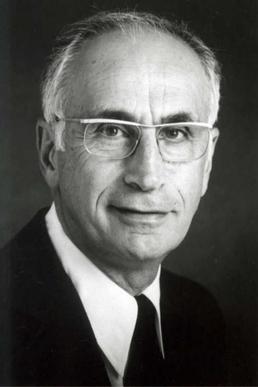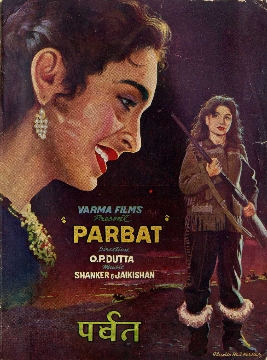
In condensed matter physics, a Bose–Einstein condensate (BEC) is a state of matter that is typically formed when a gas of bosons at very low densities is cooled to temperatures very close to absolute zero. Under such conditions, a large fraction of bosons occupy the lowest quantum state, at which point microscopic quantum mechanical phenomena, particularly wavefunction interference, become apparent macroscopically. A BEC is formed by cooling a gas of extremely low density to ultra-low temperatures.
In economics, industrial organization is a field that builds on the theory of the firm by examining the structure of firms and markets. Industrial organization adds real-world complications to the perfectly competitive model, complications such as transaction costs, limited information, and barriers to entry of new firms that may be associated with imperfect competition. It analyzes determinants of firm and market organization and behavior on a continuum between competition and monopoly, including from government actions.
The Society of Motion Picture and Television Engineers (SMPTE), founded in 1916 as the Society of Motion Picture Engineers or SMPE, is a global professional association of engineers, technologists, and executives working in the media and entertainment industry. As an internationally recognized standards organization, SMPTE has published more than 800 technical standards and related documents for broadcast, filmmaking, digital cinema, audio recording, information technology (IT), and medical imaging.

The cinema of the United States, consisting mainly of major film studios along with some independent films, has had a large effect on the global film industry since the early 20th century. The dominant style of American cinema is classical Hollywood cinema, which developed from 1910 to 1969 and is still typical of most films made there to this day. While Frenchmen Auguste and Louis Lumière are generally credited with the birth of modern cinema, American cinema soon came to be a dominant force in the emerging industry. As of 2017, it produced the third-largest number of films of any national cinema, after India and China, with more than 600 English-language films released on average every year. While the national cinemas of the United Kingdom, Canada, Australia, and New Zealand also produce films in the same language, they are not part of the Hollywood system. Because of this, Hollywood has also been considered a transnational cinema, and has produced multiple language versions of some titles, often in Spanish or French. Contemporary Hollywood often outsources production to Canada, Australia, and New Zealand.

Michael Cormac Newell is an English film and television director and producer. He won the BAFTA for Best Direction for Four Weddings and a Funeral (1994), which also won the BAFTA Award for Best Film, and directed the films Donnie Brasco (1997) and Harry Potter and the Goblet of Fire (2005).

The Biograph Company, also known as the American Mutoscope and Biograph Company, was a motion picture company founded in 1895 and active until 1916. It was the first company in the United States devoted entirely to film production and exhibition, and for two decades was one of the most prolific, releasing over 3000 short films and 12 feature films. During the height of silent film as a medium, Biograph was America's most prominent film studio and one of the most respected and influential studios worldwide, only rivaled by Germany's UFA, Sweden's Svensk Filmindustri and France's Pathé. The company was home to pioneering director D. W. Griffith and such actors as Mary Pickford, Lillian Gish, and Lionel Barrymore.
United States v. Paramount Pictures, Inc., 334 U.S. 131 (1948), was a landmark United States Supreme Court antitrust case that decided the fate of film studios owning their own theatres and holding exclusivity rights on which theatres would show their movies. It would also change the way Hollywood movies were produced, distributed, and exhibited. It also opened the door for more foreign and independent films to be shown in U.S. theaters. The Supreme Court affirmed the United States District Court for the Southern District of New York's ruling that the existing distribution scheme was in violation of United States antitrust law, which prohibits certain exclusive dealing arrangements. The decision created the Paramount Decree, a standard held by the United States Department of Justice that prevented film production companies from owning exhibition companies. The case is important both in American antitrust law and film history. In the former, it remains a landmark decision in vertical integration cases; in the latter, it is responsible for putting an end to the old Hollywood studio system.

Armen Albert Alchian was an American economist. He spent almost his entire career at the University of California, Los Angeles (UCLA). A major microeconomic theorist, he is known as one of the founders of new institutional economics and widely acknowledged for his work on property rights.
In economics, the term sunspots refers to an extrinsic random variable, that is, a random variable that does not affect economic fundamentals. Sunspots can also refer to the related concept of extrinsic uncertainty, that is, economic uncertainty that does not come from variation in economic fundamentals. David Cass and Karl Shell coined the term sunspots as a suggestive and less technical way of saying "extrinsic random variable".
Donald Gene Saari is an American mathematician, a Distinguished Professor of Mathematics and Economics and former director of the Institute for Mathematical Behavioral Sciences at the University of California, Irvine. His research interests include the n-body problem, the Borda count voting system, and application of mathematics to the social sciences.
A studio system is a method of filmmaking wherein the production and distribution of films is dominated by a small number of large movie studios. It is most often used in reference to Hollywood motion picture studios during the early years of the Golden Age of Hollywood from 1927 to 1948, wherein studios produced films primarily on their own filmmaking lots with creative personnel under often long-term contract, and dominated exhibition through vertical integration, i.e., the ownership or effective control of distributors and exhibition, guaranteeing additional sales of films through manipulative booking techniques such as block booking.

The Motion Picture Association (MPA) is an American trade association representing the five major film studios of the United States, as well as the video streaming service Netflix. Founded in 1922 as the Motion Picture Producers and Distributors of America (MPPDA) and known as the Motion Picture Association of America (MPAA) from 1945 until September 2019, its original goal was to ensure the viability of the American film industry. In addition, the MPA established guidelines for film content which resulted in the creation of the Motion Picture Production Code in 1930. This code, also known as the Hays Code, was replaced by a voluntary film rating system in 1968, which is managed by the Classification and Rating Administration (CARA).
George Ward Stocking Sr. was an American economist, who was one of the pioneers of industrial organization and an early writer on international cartels.

Thomas W. Hazlett is the Hugh H. Macaulay Endowed Professor of Economics in the John E. Walker Department of Economics at Clemson University where he also directs the Information Economy Project.
Janet Staiger is the William P. Hobby Centennial Professor Emeritus of Communication in the Department of Radio-Television-Film and Professor Emeritus of Women's and Gender Studies at the University of Texas at Austin.
William Breit (1933–2011) was an American economist, mystery novelist, and professional comedian. Breit was born in New Orleans. He received his undergraduate and master's degrees from the University of Texas and his Ph.D from Michigan State University in 1961. He was an Assistant and Associate Professor of Economics at Louisiana State University (1961–1965) On the recommendation of Milton Friedman he was interviewed and hired at the University of Virginia where he was Associate Professor and Professor of Economics (19651983). He returned to his San Antonio as the E.M. Stevens Distinguished Professor of Economics at Trinity University in 1983 and retired as the Vernon F. Taylor Distinguished Professor Emeritus in 2002. He is considered an expert in the history of economic thought and anti-trust economics. He established the Nobel Laureate Lecture Series at Trinity University and is most notable as a mystery novelist where their murder mysteries are solved by applying basic economic principles.
Uncertainty, Evolution, and Economic Theory is an article published in 1950 which was written by economist Armen Alchian.
A hallmark of Albert Einstein's career was his use of visualized thought experiments as a fundamental tool for understanding physical issues and for elucidating his concepts to others. Einstein's thought experiments took diverse forms. In his youth, he mentally chased beams of light. For special relativity, he employed moving trains and flashes of lightning to explain his most penetrating insights. For general relativity, he considered a person falling off a roof, accelerating elevators, blind beetles crawling on curved surfaces and the like. In his debates with Niels Bohr on the nature of reality, he proposed imaginary devices intended to show, at least in concept, how the Heisenberg uncertainty principle might be evaded. In a profound contribution to the literature on quantum mechanics, Einstein considered two particles briefly interacting and then flying apart so that their states are correlated, anticipating the phenomenon known as quantum entanglement.

The Road to the Heart is a 1909 American short film, a dramedy directed by D. W. Griffith and produced by the Biograph Company of New York City. Starring David Miles, Anita Hendrie and Herbert Yost, the production was filmed in two days in March 1909 at Biograph's studio in Manhattan. It was released in April that year and distributed to theaters on a "split-reel", which was a single film reel that included more than one motion picture. The other picture that accompanied this comedy was the Biograph comedy Trying to Get Arrested.

Parbat is a 1952 Bollywood film starring Prem Nath, Nutan, and K. N. Singh. The film was produced and distributed by Varma Films and directed by O.P. Dutta.








